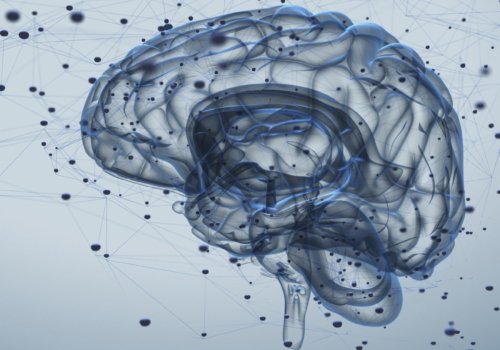New Migraine Drugs Are on the Horizon
New insight into the chemical mechanism involved in migraine pain has led to new medicines, now in late stages of development
A new class of migraine drugs in late-stage development comes as scientists believe they may finally have unlocked some key biological mysteries about the debilitating condition. WSJ’s Jonathan Rockoff joins Shelby Holliday to discuss.
By
JONATHAN D. ROCKOFF
March 21, 2016 1:10pm ET
Researchers are unlocking some of the mysteries surrounding migraines, raising hopes for a new class of treatments.
Millions of patients who experience migraines would benefit from better medicines, researchers say. Drugs taken to treat the debilitating headaches don’t work in all patients. Meanwhile, drugs taken to prevent attacks were developed to fight other conditions, like high blood pressure, and have limited effectiveness.
Today several companies are in the late stages of testing a new class of migraine drug. These drugs target a chemical known by its initials, CGRP, that researchers have found is involved in the brain’s pain-signaling during migraines.
“Finally a new era seems to be emerging,” says David Dodick, director of the migraine program at the Mayo Clinic in Arizona, president of the International Headache Society and chairman of the American Migraine Foundation.
“We know enough about the biology and what’s happening in the brain during an attack that some new medicines are being specifically developed for migraines,” Dr. Dodick says.

Dr. David Dodick, right, with assistantprofessor of neurology Dr. Amaal Starling, at the Mayo Clinic’s simulation lab, where students, residents and fellows use mannequin simulators PHOTO: PETE PALLAGI/MAYO CLINIC |
The foundation says some 36 million Americans suffer from migraines, intense headaches that, while varying among patients, are often marked by throbbing pain, sensitivity to light and nausea. Attacks can last for days, sending sufferers–who are more likely to be women than men–into a dark rooms until the migraine goes away or treatment can take effect.
There is no cure. To prevent migraines, sufferers often try to avoid lifestyle triggers, such as wine or skipped meals. And they may regularly take medicines like an ibuprofen painkiller, the blood-pressure drug propranolol or the epileptic-seizure medicine topiramate.
Patients may also take one of the so-called triptan drugs, sold under generic names like sumatriptan and rizatriptan, to mute attacks.
But heavy use of the triptans and other widely-used drugs can cause rebound headaches in some patients. And researchers say only about half of patients respond to the preventive drugs or can tolerate side effects such as fatigue and weight changes.
Only 13% of migraine patients who would benefit from taking a preventive medicine daily did so, according to a 2007 study in the journal Neurology, based on a survey of almost 78,000 households comprising more than 160,000 people ages 12 and older.
Deborah Henscheid Lorenz takes four drugs a day that she believes have cut down her number of attacks, but she still suffered eight or nine last month. She says she typically goes to the hospital at least once a year because a migraine won’t go away. She takes a triptan when a migraine hits, but says the drug often doesn’t help if she doesn’t take it while the headache is starting.

Deborah Henscheid Lorenz, an intellectual property lawyer in Scottsdale, Ariz., suffers from migraines and finds medications now on the market sometimes don’t provide relief.PHOTO: PAM SPICER |
“I hope anything that’s new and novel will provide some avenue for direct and instant relief,” says Ms. Henscheid, 52, an intellectual property lawyer from Scottsdale, Ariz.
New drug discovery was hindered for years by a lack of understanding about the causes of migraines. The prevailing wisdom had long been that they were the result of a widening of blood vessels in the brain. More recently, research has indicated migraines are actually a neurological disorder in which pain and sensory networks in the brain are activated and healthy pain signaling goes haywire.
Researchers have now identified some genes that play important roles in many patients. They are studying migraines both in mice engineered to have attacks and in humans, using the latest brain-imaging technology, says Peter Goadsby, who worked on research that led to the 1990 publicationof research identifying the role of the chemical CGRP in migraines.
CGRP, which stands for calcitonin gene-related peptide, is a small protein found at the ends of nerves and embedded in blood vessels throughout the body; its release helps dilate, or widen, blood vessels and generally signals pain when it is released into the blood or between nerves. Research found it can trigger migraines in particular when given to certain patients, says Dr. Goadsby, director of the NIHR-Wellcome Trust Kings Clinical Research Facility at Kings College London and neurology professor at the University of California, San Francisco. Other research published in 1993 found patients given a triptan drug had a drop in blood levels of CGRP protein.

Peter Goadsby, director of the NIHR-Wellcome Trust Kings Clinical Research Facility at Kings College London and neurology professor at the University of California, San Francisco. PHOTO: PETER GOADSBY |
The findings prompted drug companies to develop medicines designed to block the effect of the peptide, or neutralize it. In 2011, Merck & Co. halted development of a pill dubbed telcagepant that showed promise for providing relief from attacks but also seemed to increase levels of liver enzymes, a potential safety red flag.
As a result, many companies focused on developing injections known as monoclonal antibodies, which could be targeted more directly at CGRP and wouldn’t wind up in the liver, where it could cause safety issues.
Alder BioPharmaceuticals Inc., Amgen Inc., Eli Lilly & Co. and Teva Pharmaceutical Industries Ltd. are in the late stages of testing their injections. Allergan Inc., which sells Botox for treatment of chronic migraines, is working on CGRP-blocking pills that the company says were designed to reduce the risk of liver side effects.
All of the companies say they haven’t seen any signs of safety problems so far in their clinical testing. “The available evidence suggests the liver toxicity is not a consequence of intervening on CGRP,” but rather an “idiosyncratic response to a specific molecule,” says Richard Lipton, a professor of neurology at Albert Einstein College of Medicine and director of the Montefiore Headache Center in New York City, who has consulted for various drug companies.
The first approvals of the monoclonal antibodies could be as early as 2018, according to Citi Research. Allergan says its most-advanced pill, called ubrogepant, starts phase 3 testing this year and could be approved as early as 2019.
Elizabeth Loder, who heads the headache division at Brigham and Women’s Hospital in Boston and is a former president of the American Headache Society, expects the CGRP-blocking drugs would improve treatment for many patients if they continue to work safely in clinical testing and win approval. The new drugs probably won’t stop all attacks or help all patients, though, she cautions.


